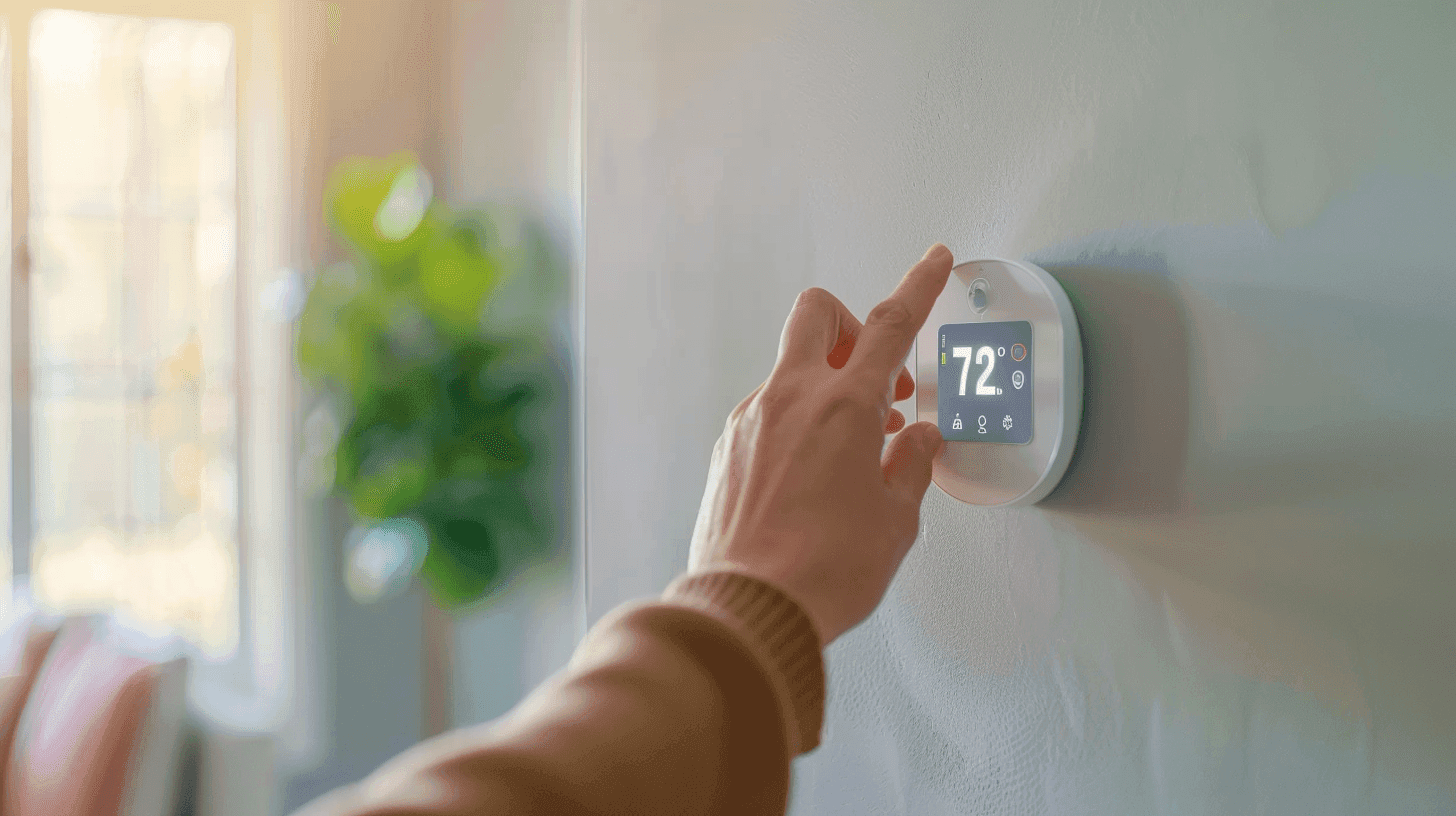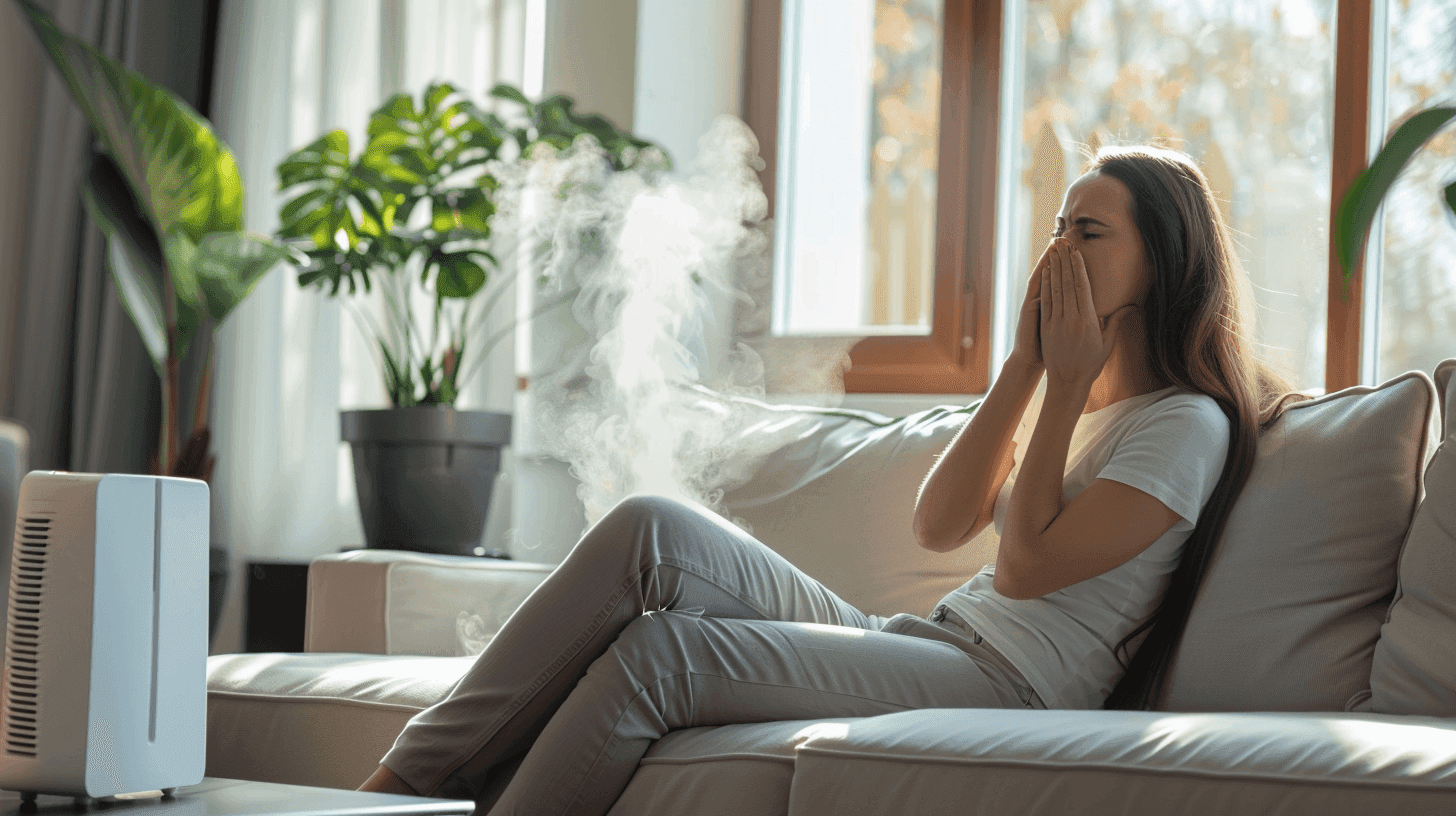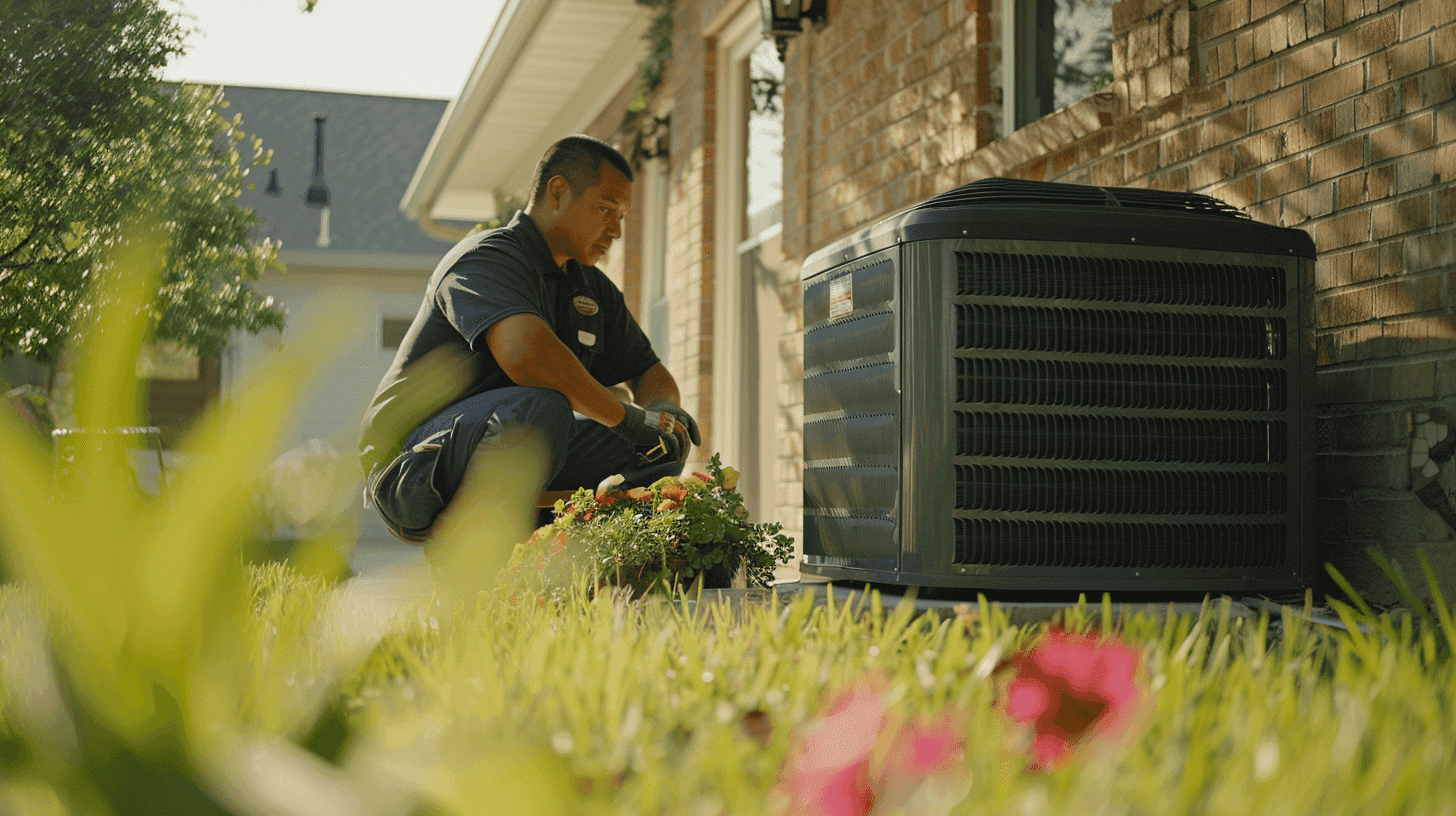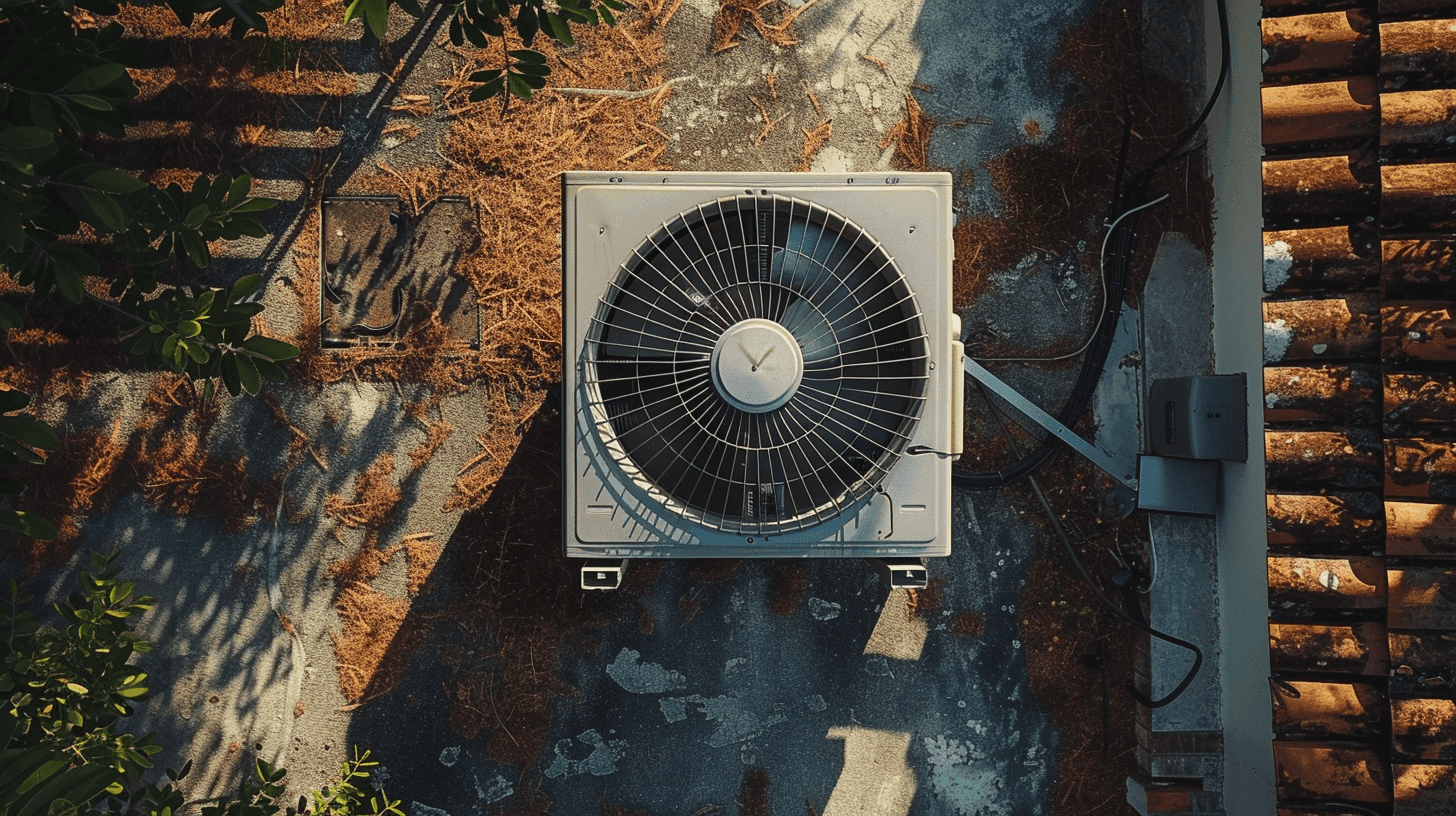
Clearing the Air: A Guide to Indoor Air Quality and Common Contaminants
Sharing your quote takes less than a minute

Indoor Air 2 to 5 Times More Polluted than Outdoor Air
The COVID-19 pandemic underscored the critical importance of healthy indoor air quality, prompting many to spend more time indoors and take precautions to minimize virus transmission risks. However, despite this heightened awareness, millions of homes continue to grapple with various pollutants, from allergens to volatile organic compounds (VOCs). According to the Environmental Protection Agency, indoor air can be two to five times more polluted than outdoor air, highlighting the pressing need for effective indoor air quality solutions to safeguard our health and well-being.
In this comprehensive guide, HVAC.com explores the most common indoor air contaminants, outlining their potential health risks, identifying vulnerable demographics, and offering trusted solutions to enhance overall air quality in homes.
Common Indoor Air Contaminants
The most common indoor air contaminants found in homes include:
Dust
Dust, commonly found in every home, is an accumulation of dead skin cells, carpet fiber, dirt, and other debris. A buildup of excess dust in homes is often caused by factors such as inadequate ventilation, infrequent cleaning, and the presence of indoor air contaminants like pet dander and pollen. While dust might seem harmless, those living in a dusty home are subject to dust mites and allergies.
Allergens
Both pet dander and pollen are common indoor allergens that can trigger allergic reactions and respiratory issues in sensitive individuals. Pet dander consists of shed skin cells, fur, feathers, and saliva from pets, which can become airborne and cause allergies. Additionally, pollen particles from outdoor sources can infiltrate homes through windows, doors, and ventilation systems, further exacerbating allergy symptoms.
VOCs
Pesticides, formaldehyde, and other evaporated substances are commonly emitted from everyday furnishings and building materials. Other common causes of VOCs in homes include the use of household cleaning products, paints, varnishes, and adhesives. The EPA has warned that, at certain concentrations, VOCs can cause headaches, nausea, and permanent damage to the kidneys, liver, and the central nervous system.

Combustion Products
Every home uses combustion products routinely, whether or not they realize it. These consist of common gas-powered appliances like your dryer, water heater, and furnace. If not properly ventilated, these products allow toxic combustion products like CO2 – which can be fatal when inhaled – to enter into the home and get trapped in the air. Routinely inspecting these appliances to ensure they’re operating properly.
Tobacco Smoke
The indoor air can become tainted with harmful chemicals and carcinogens from secondhand smoke emanating from cigarettes, cigars, and pipes, posing health hazards to those who inhabit the space. For individuals who smoke or have family members who smoke, it's advisable to smoke outdoors.
Moisture
When moisture accumulates in a home, it becomes subject to a host of moisture-related health hazards, including mold, mildew, and dust mites, all of which can cause allergies and shortness of breath when breathed in. If you notice water leakage around an appliance such as the furnace or water heater, have a professional inspect the unit and make the appropriate repairs.
Radon
Beneath the surface of your home, you could have radioactive radon gas percolating up through the soil and through the foundation slab, without you even knowing it. Radon is one of the leading causes of lung cancer, and it could be affecting your family if you haven’t taken preventative measures. Radon should typically be inspected for about every two years.
Cooking Odors and Fumes
Cooking activities can release airborne particles and gases such as grease, smoke, and cooking odors, which can affect indoor air quality if not properly ventilated.
Who’s Vulnerable to the Hazards of Poor Indoor Air Quality?
In truth, everyone is at risk of exposure to indoor air pollution – especially homeowners who don’t keep up with their home’s HVAC system maintenance schedule. But those who spend more time indoors or have particularly weak immune systems are more susceptible to the adverse long-term effects of pollution.
For example, elderly people who can’t leave the house on their own, as well as young children and stay-at-home parents who tend to spend the majority of their day at home, are more likely to be affected by poor air quality. In fact, a recent EPA report showed that half of all pneumonia-related deaths among children under the age of five are linked to indoor air contamination. Those with allergies, a chronic respiratory disease, or a cardiovascular condition are also at a higher risk.
The World Health Organization (WHO) reports that about 4.3 million people die annually due to indoor air pollution – around 600,000 more than those killed by outdoor air pollution. Considering the fact that Americans spend 90% of their time indoors, this is a concerning statistic.
What Are the Effects of Exposure to Indoor Air Pollutants?
Even brief exposure to poor indoor air quality can lead to some uncomfortable health symptoms. However, some of these symptoms are fairly common, and can be misread as allergies or cold symptoms. Because of this, it’s important to pay close attention to when and where the following symptoms occur:
- Coughing
- Sneezing
- Sore throat
- Dizziness
- Headaches
- Upper respiratory congestion
- Watery eyes
- Fatigue
These symptoms can be especially obvious in people with asthma, chronic bronchitis, and other respiratory illnesses. The frequent presence of irritating air pollutants can exacerbate respiratory issues, causing immediate aggravation and discomfort. Symptoms can vary in severity depending on the individual’s sensitivity and the specific contaminants present in the indoor environment.
Low-quality indoor air can lead to more than just allergic reactions and headaches over time. While indoor air quality might not seem like an immediate threat, long-term exposure to indoor pollutants can impair judgment and cognition and even have fatal consequences, including heart disease, lung disease, and cancer. Of the 4.3 million who die each year due to poor indoor air quality, 60% of them die from heart-related conditions, and the other 40% die from lung problems.

How to Prevent Poor Indoor Air Quality
Although this public health crisis is ubiquitous, it’s not inevitable. There are simple preventative measures you can take to protect your family, including:
Installing Indoor Air Quality Equipment
Installing indoor air quality equipment can play a significant role in improving air quality within homes, which is particularly important if you live with family members who are more vulnerable to the adverse health effects of poor indoor air. Some common IAQ devices to consider installing include:
- Dehumidifiers. While your air conditioning system is designed to extract excess moisture from the air during summer, it may encounter challenges when outdoor humidity levels spike. Adding a whole-house dehumidifier to your HVAC system can help regulate humidity levels, creating a healthier indoor environment and mitigating issues such as mold growth.
- Humidifiers. In winter, when humidity levels often plummet below the recommended range of 30-50%, it can be beneficial to set up portable humidifiers around your house or install a whole-house option. Humidifiers add moisture to dry indoor air, helping to alleviate symptoms of dry skin, irritated eyes, and respiratory discomfort.
- Air Cleaners. Whole-house air cleaners, equipped with filters or purification technologies, effectively capture and eliminate airborne particles, allergens, and pollutants, including dust, pet dander, pollen, and VOCs.
- Ventilation Systems. Whole-house ventilation systems, such as mechanical ventilation systems or energy recovery ventilators (ERVs), ensure adequate air exchange by bringing in fresh outdoor air and expelling stale indoor air, thereby diluting indoor air contaminants and improving overall air quality. Opening windows and doors, when the weather permits, and using bathroom and kitchen fans that exhaust air outdoors can also significantly reduce airborne contaminants.
Using Combustion Products with Caution
Make sure all furnaces, water heaters, and stoves are operating correctly and are able to ventilate properly. Never leave a vehicle idling in a closed space near the home, such as in the garage.
Scheduling Regular HVAC Maintenance
Schedule routine maintenance for HVAC systems to ensure efficient operation and prevent the buildup of contaminants within the system. HVAC maintenance should ideally be performed twice a year – once in the spring before the cooling season and again in the fall before the heating season.
Detecting and Preventing Radon Exposure
Radon detectors and prevention devices are easy to obtain and install. A radon control device usually involves a fan and a PVC pipe that work together to improve the flow of radon and release it into the atmosphere at the roof level so that the pressure doesn’t push it up into your house through the foundation.
Installing Carbon Monoxide Detectors
Consider installing CO detectors throughout your home to detect potentially harmful or fatal carbon monoxide. Carbon monoxide alarms should be installed in every bedroom, outside all sleeping areas, and on every floor of the home.
Performing an Indoor Air Quality Test
People might consider hiring a professional for an indoor air quality test if they’re unsure whether their air quality has been adequately assessed or if they’re experiencing symptoms like allergies or respiratory issues but can’t identify the root cause. Professional testing can provide comprehensive insights into indoor air contaminants and help individuals pinpoint specific issues affecting their health and well-being.
Sharing your quote takes less than a minute




